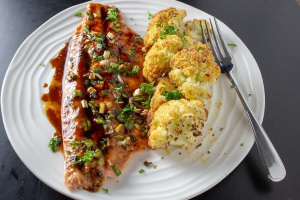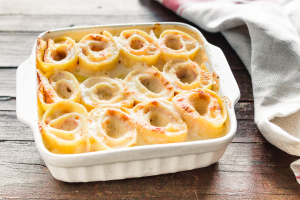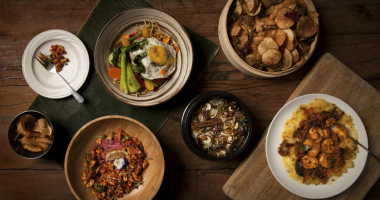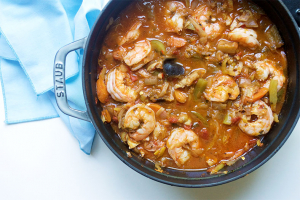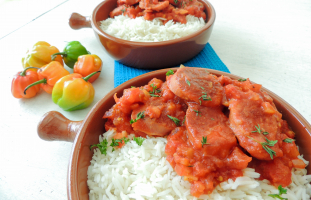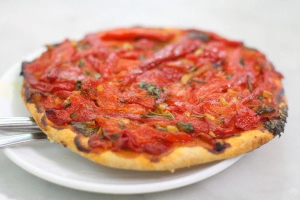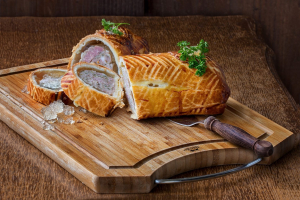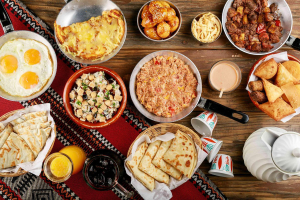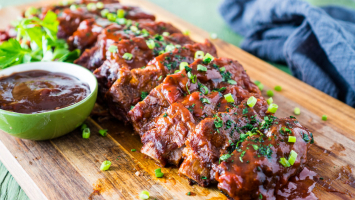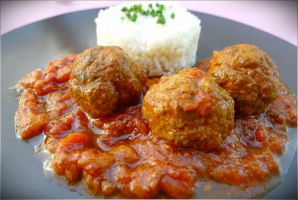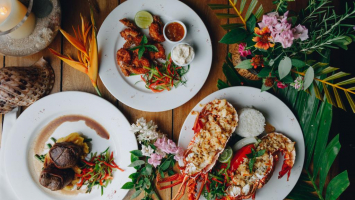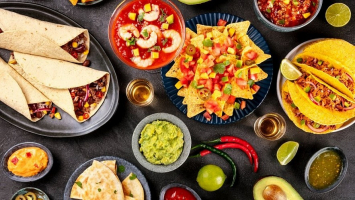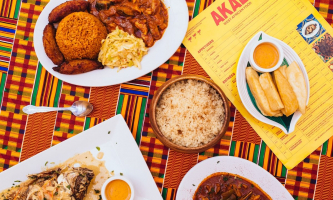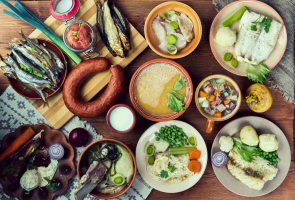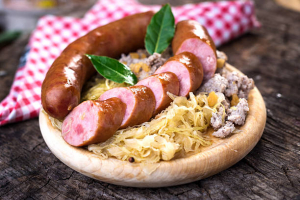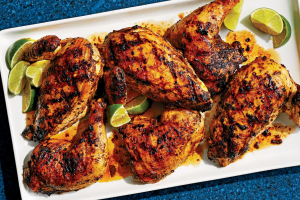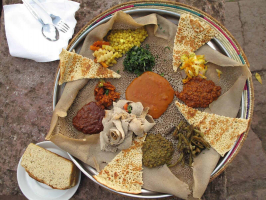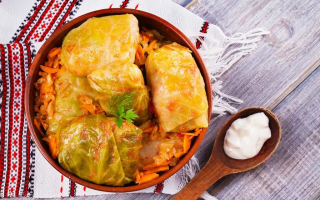Top 13 Best Foods in Taiwan
Though Chinese characteristics are significantly influential in Taiwanese cuisine, the country's rich history and distinct geographical position have resulted ... read more...in a cuisine that is extremely diversified and flavorful, with a heavy use of garlic and soy sauce. Let's take a look at some of top Taiwan's must-try foods.
-
The flavorful, spicy beef noodle soup is Taiwan's national cuisine and a source of great pride for its people. In Taipei, you can get the world's most expensive bowl of beef noodle soup, but there are also reasonably priced beef noodle businesses on every corner. Beef, broth, vegetables, noodles, and spices are often used in this recipe, which is perfect for winter comfort food.
Beef noodle soup has a strong Sichuan influence, dating back to the 1940s, when China was in the midst of civil war and many Chinese people fled to Taiwan, resulting in the creation of this cross-provincial cuisine with chili bean sauce and Sichuan peppercorns.
When it comes to cooking this long-simmering stew, the possibilities are unlimited, and there are several side dishes to accompany it in Taiwan, including seaweed and braised dried tofu. Today, the annual Beef Noodle Festival in Taipei pits several restaurants and chefs against one another for the title of Best Beef Noodle.
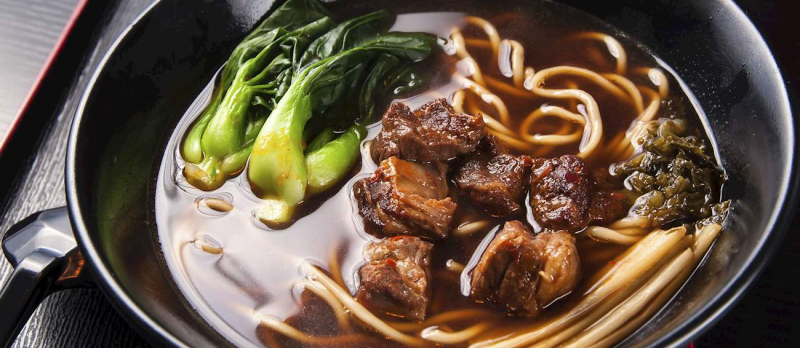
Photo By Shutterstock 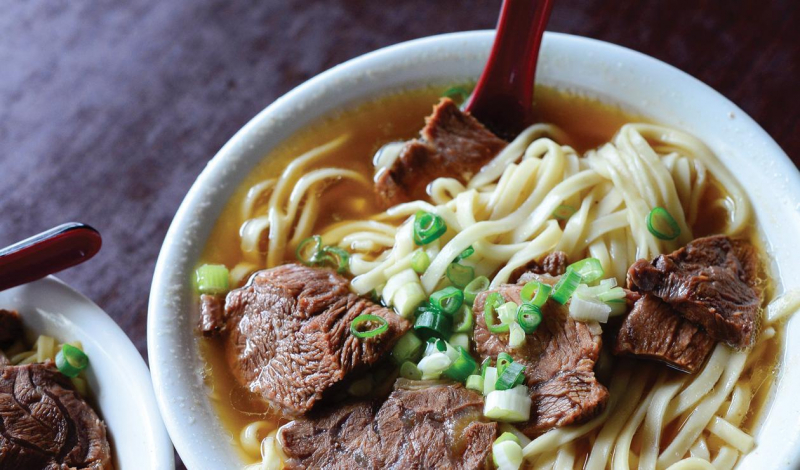
https://www.unileverfoodsolutions.ca/ -
Though similar variations of scallion pancakes may be found in other Asian nations, they are a popular and much sought-after snack or complement to other dishes in Taiwan. The pancakes are made using an unleavened dough that is flattened, then rolled and pressed to make a flat pancake that is pan-fried till crispy.
These delightful treats are occasionally made with the same type of dough that is rolled and deep-fried before being smeared with a flavorful blend of scallions, in addition to the traditional version. Scallion pancakes, in all its variants, are a popular street dish in Taiwan, especially at traditional night markets.
Although the pancakes can be served with other foods, they are commonly served with a variety of dipping sauces.
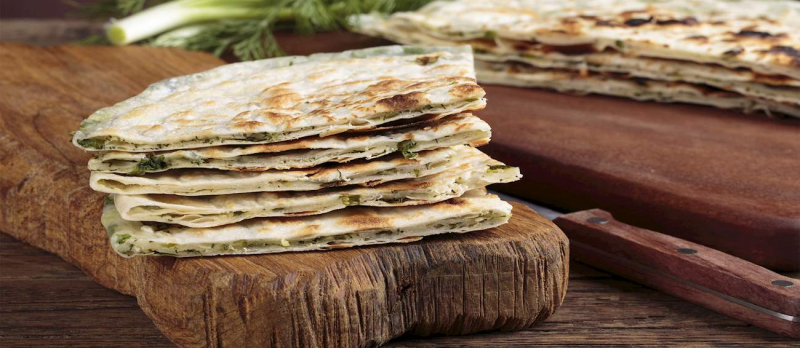
Photo By Shutterstock 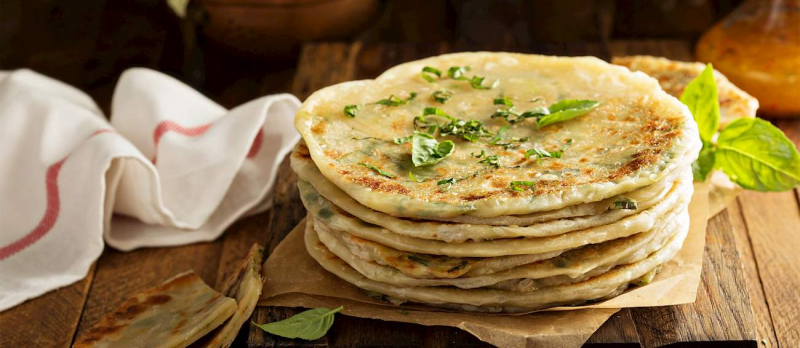
Photo By Shutterstock -
Fèngls are pineapple cakes from Taiwan, which are one of the country's most popular desserts and souvenirs. The cakes have a buttery, crumbly crust and an acidic, somewhat sweet pineapple jam filling. The dish's name comes from the Chinese characters fèng l, which means pineapple, and s, which means shortcake.
They were originally made during the Three Kingdoms Dynasty in China. Wei, Shu, and Wu kingdoms were formed, and the emperor of Shu wished to marry the sister of Wu's ruler, so he sent a giant pineapple cake as a present.
Today, the cakes are substantially smaller and are one of Taiwan's most popular souvenirs. It's best to serve the cake warm, with a cup of hot tea on the side.
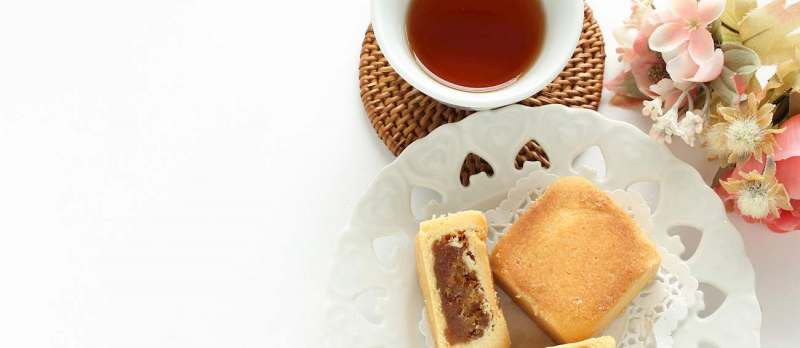
Photo By Shutterstock 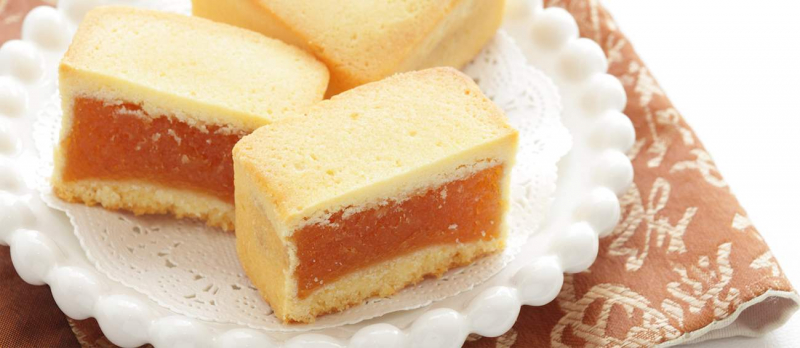
Photo By Shutterstock -
Shaved ice mountains are often large blocks of flavored ice that have been shaved into ribbony sheets or a fine snow-like powder by a machine. Red-bean packed tapioca shaved ice is provided alongside the classic version.
Mango shaved ice is a popular Taiwanese ice dish made by shaving mango-flavored ice into a bowl and topping it with fresh mango cubes and condensed milk. Fresh fruit, such as strawberries or kiwis, scoops of mango or vanilla ice cream, pannacotta, sorbet, and jam are all common accompaniments to the dessert.
To appeal to the younger generation, they are now piled high with fresh fruit and flavorings such as mango pieces, Taro balls, mung beans, tapioca balls, and grass jelly, all soaked in a hefty dosage of condensed juice and sweet milk. This summer and winter delicacy has a silky, melt-in-your-mouth texture and is characterized by a fresh, fruity flavor with a light sweetness.
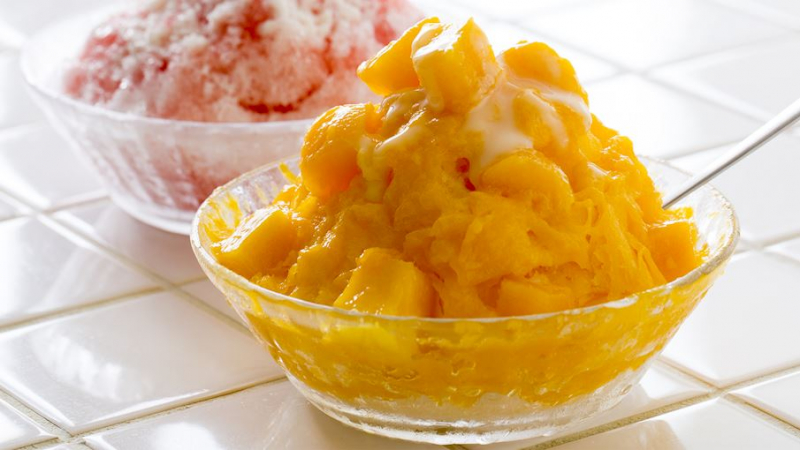
Photo By Shutterstock 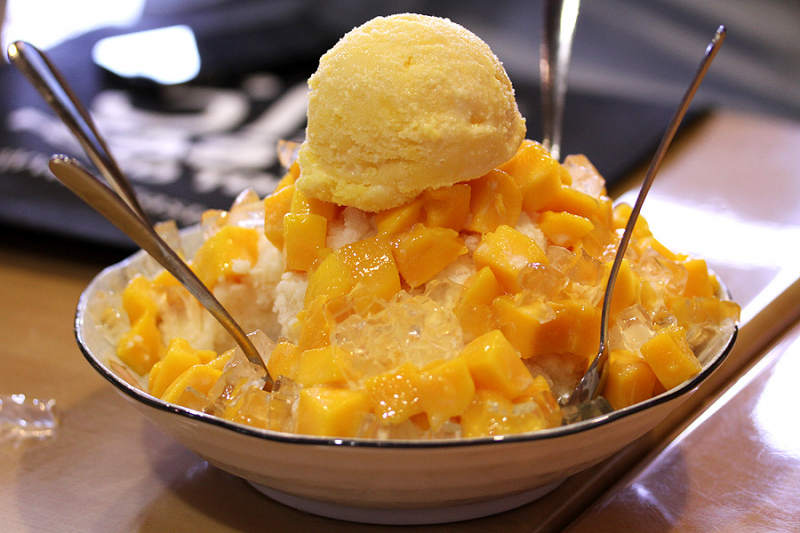
https://livingnomads.com/2018/10/must-eat-food-in-taipei/mango-shaved-ice/ -
Mooncake, a pie-like pastry made with a shortcrust base called yueh ping and typically filled with black sesame seed or lotus seed paste, red beans, roasted pork, mung beans, dates, and salted duck egg yolks, is an ancient Chinese delicacy eaten during the Mid-August Festival or Moon Festival.
Mooncakes are now available with a range of sweet and savory fillings, including honeydew, litchi, and pineapple, as well as chocolate or mixed nuts, abalone and seaweed, green tea, and even cream cheese or ice cream. Their round shape is suggestive of the moon, but it also represents a full circle, which in Chinese philosophy represents fullness, oneness, perfection, and unification.
Mooncakes are normally eaten split into small slices and served with Chinese tea because they are supposed to be shared. These pastries were originally produced as a Moon offering, but they have now evolved into the most popular food of the Mid-Autumn Festival.
The Mid-Autumn Festival, also known as the Moon Festival, is a Chinese festival observed on the 15th day of the 8th lunar month, when the full moon is considered to be at its brightest and closest to Earth. It is a national holiday and an intangible cultural heritage.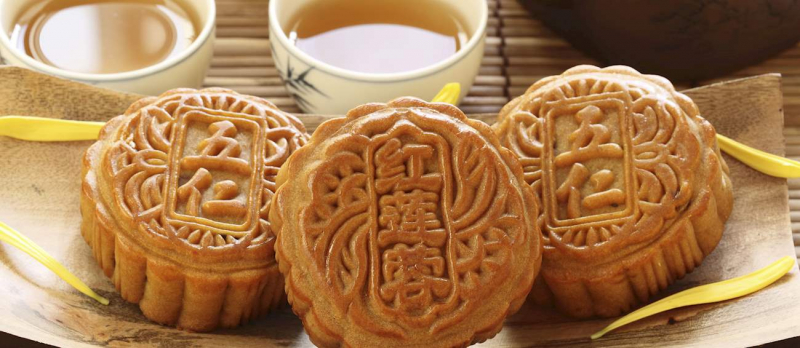
Photo By Shutterstock 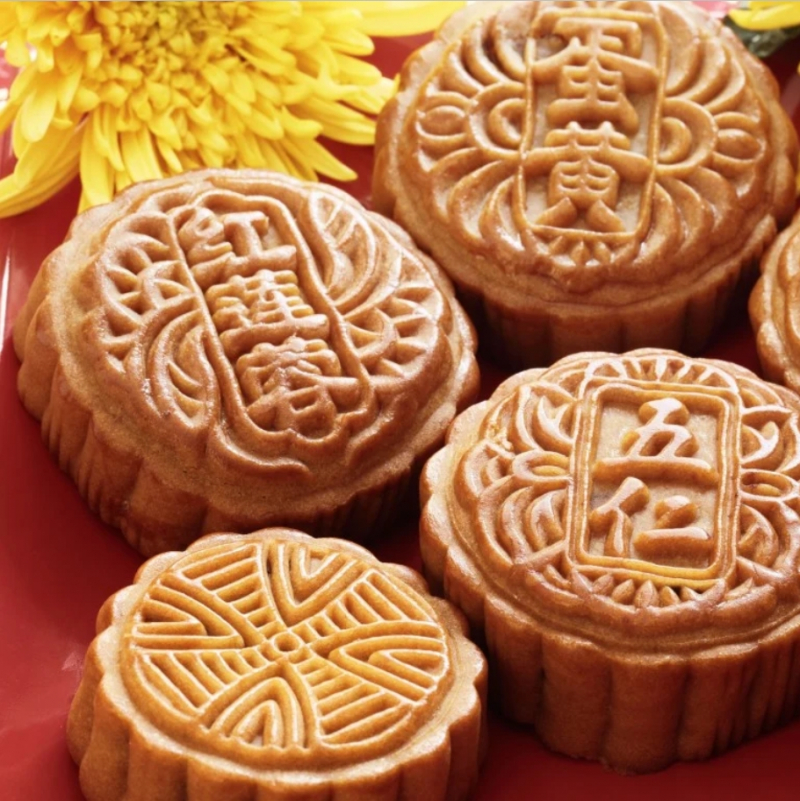
https://www.scmp.com/ -
The suncake, or tai yang bing, is one of Taichung City's specialties and most recognizable standouts, despite the city's many signature dishes and unique variations on local gastronomy. This wonderful Taiwanese flaky pastry packed with gooey, buttery maltose filling has been a pleasure in every bakery store in Taichung since the Qing dynasty era.
It's even available as a keepsake in elegant gift boxes. The round-shaped Suncakes are usually sweeter than honey, and their thick, caramel-like filling contrasts well with the dry flakiness of the floury, paper-thin layers of phyllo dough.
Suncakes are traditionally served with a cup of Chinese tea, soaked in hot water and mashed into a porridge-like dessert, or dipped in warm almond milk, which is a popular breakfast option in Taichung.
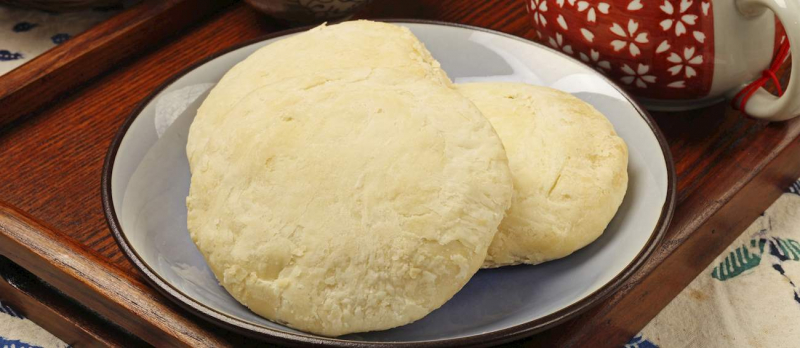
Photo By Shutterstock 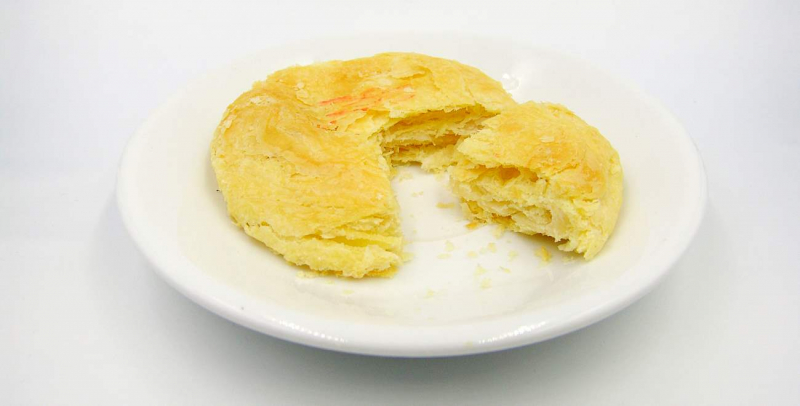
Photo By Shutterstock -
Lu rou fan, a traditional Taiwanese dish made with ground pork simmered in soy sauce, five-spice powder, and rice wine until soft and delicious, is a simple, juicy, and savory dish. Lu rou fan is a simple yet delicious dinner made with minced pork in gravy and served over freshly steamed white rice in most local Taiwanese eateries.
Finely diced pork belly, slow-cooked in aromatic soy sauce, and Shaoxing rice wine with five spices make up a delicious bowl of lu rou fan. On top of steamed white rice, the tenderized pork is served with pickled veggies and occasionally an additional soy sauce egg. Lu rou fan can be eaten as a complete dinner or as the foundation for a meal that includes a variety of sides.
Pickled cucumbers or shiitake mushrooms are sometimes included with the dish. Lu rou fan literally translates to "stewd beef rice," and the meal is also known as "Taiwanese rag." Lu rou fan was once a nutritious and wholesome supper for agricultural families in Taiwan, but it is now available virtually anywhere, from home kitchens to restaurants and street carts.
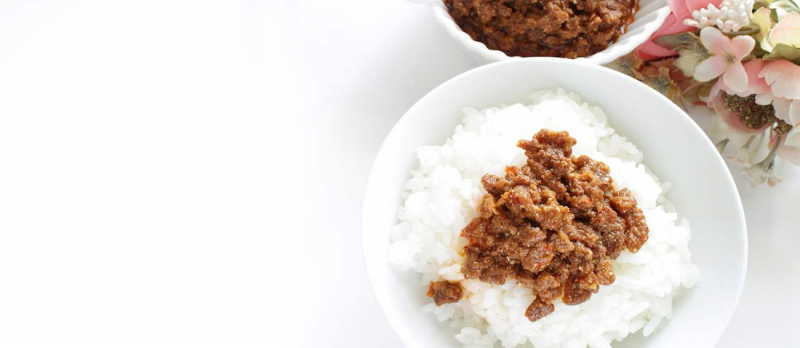
Photo By Shutterstock 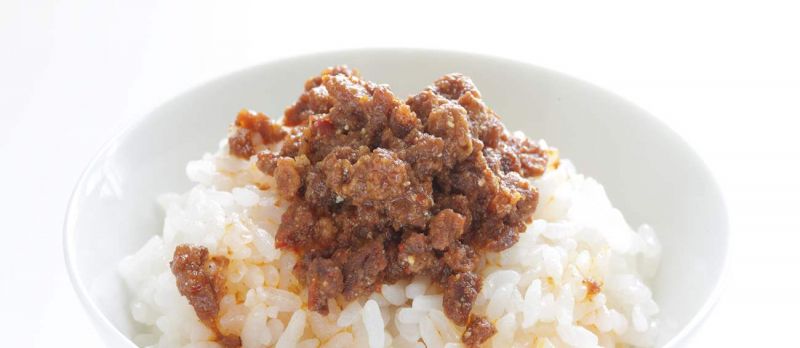
Photo By Shutterstock -
Bite-sized chunks of chicken are marinated in a savory blend of soy sauce, garlic, ginger, rice wine, and different spices in this Taiwanese classic. The chunks are then deep-fried until crispy, covered with potato or corn starch.
Taiwanese fried chicken may appear to be ordinary fried chicken, but the deep-fried version seasoned is a delicious local street snack. Traditional seasonings include salt, pepper, and five-spice, although modern versions may add seaweed powder, mustard powder, or allspice. Taiwanese popcorn chicken is recognized by a variety of names and is one of the country's most popular street foods.
Although the meal is often served without a sauce, it is frequently garnished with deep-fried basil leaves. Many night markets stalls and fast-food restaurants sell Taiwanese fried chicken, which is one of the people's favorite late-night munchies. It's so large that it's practically as big as your face!
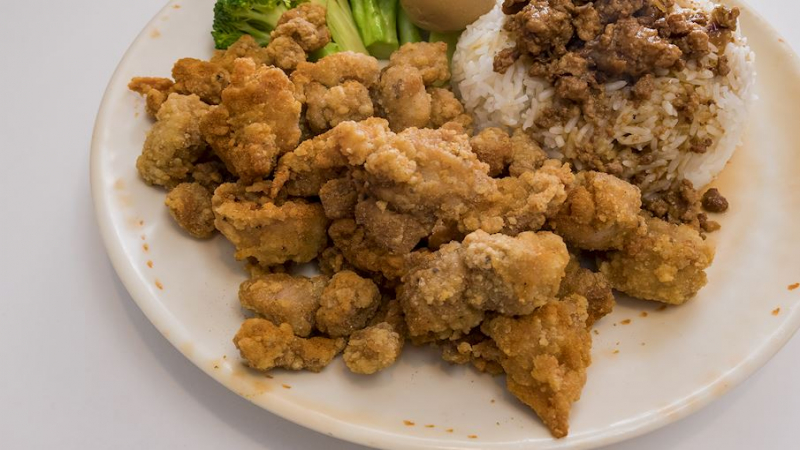
Photo By Shutterstock 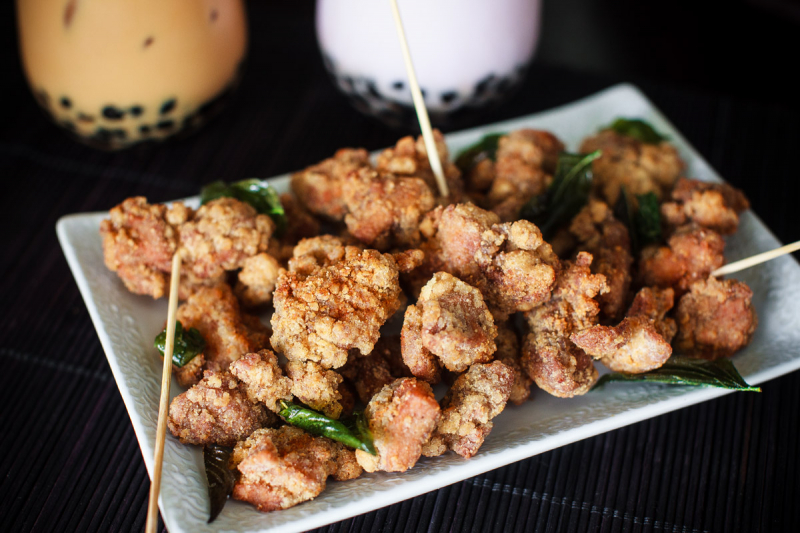
http://foodisafourletterword.com/ -
Turkey rice is a traditional Taiwanese meal made with shredded turkey meat and served over plain boiling rice. The meal is generally covered with soy sauce-flavored drippings and served with daikon radish, in addition to soft bits of steamed turkey and rice. The most essential component is, maybe, the sauce, which is produced using conserved broth and enhanced with animal fat.
In Taiwanese restaurants, the rendered fat from the turkey is frequently used, but store-bought lard or duck fat are reliable substitutes for the rich flavor. Rice wine, softly sweet light soy sauce, herbaceous white pepper, garlic, and the oil from frying a sprinkling of shallots will give the sauce profound levels of flavor and warmth. You could find that after digging in, you wish you'd bought a bigger bird after all.
Turkey rice began as a simple and inexpensive supper in the Taiwanese province of Chiayi, and has since grown to become one of the country's most popular dishes. It is commonly consumed as a late-night snack and is available at a variety of street food vendors and traditional Taiwanese markets.
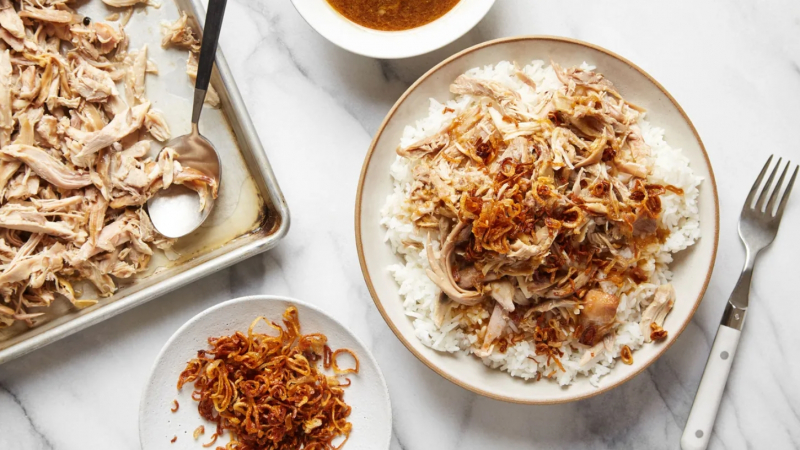
https://www.epicurious.com 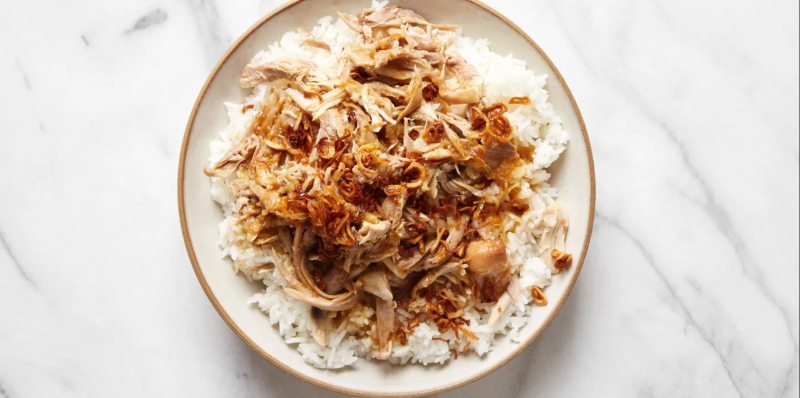
https://www.epicurious.com/ -
Thick Chinese wheat noodles, shrimp-flavored broth, minced pork, pork sauce, and a single cooked shrimp on top are the main ingredients of the soupy snack known as tà-á-m noodles or danzi noodles. Vendors and restaurants keep a few spices and the amount of ingredients added a secret, giving the popular snack an air of mystery.
Tà-á-m, or shoulder pole noodles, were invented in 1895 by a local fisherman as a way to supplement his income during the off-season. They were carried on shoulder poles through the streets of a tiny Taiwanese town, earning them the name.
While the basic recipe is well-known, the spices used and the amounts of the main ingredients (shrimp flavored soup, shrimp, coriander, and garlic) are closely guarded secrets among the numerous restaurants/stands that offer it. [3] Despite its appearance as a basic snack, it has received widespread attention from foodies all over the world. The standard serving size is tiny, and it is more of a snack than an entree. It's also on the pricey side (relatively), with a small bowl costing roughly NT$50 (US$1.60).
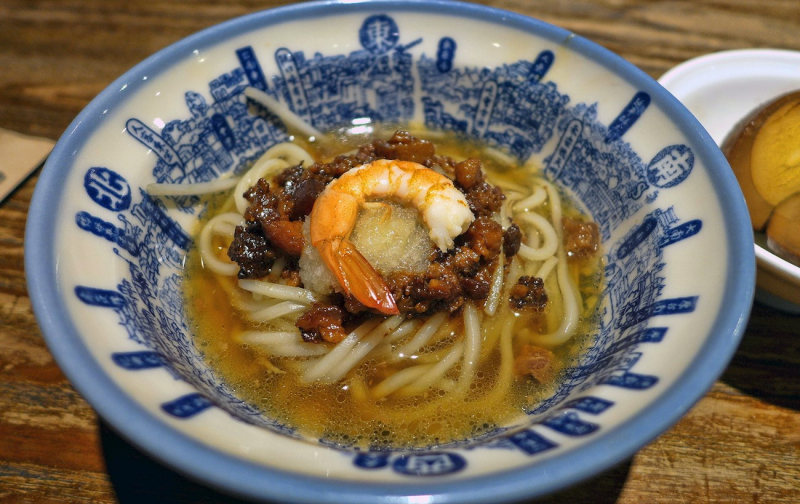
Photo By Shutterstock -
Taiwanese fish cakes prepared with a thick mixture containing mild white fish fillets, eggs, and potato or tapioca flour. The heavily seasoned batter is piped straight into the hot oil and deep-fried till golden brown.
Fish cakes are typically fashioned into long, thin cylindrical shapes, although they can also be flattened into thick, spherical discs. Even though they can be eaten just after frying, the Taiwanese cook them in a soy-sauce-based broth for a long time, allowing the crispy shell to soften and the cake to absorb all of the pungent broth tastes.
It's frequently skewered and eaten as a snack on the go if it's presented as a crispy delicacy. Traditional Taiwanese eateries frequently provide fried and boiled versions with other deep-fried delights like fish balls or tofu. They're coated in a sticky brown sauce mixed with chili paste, soy sauce, miso, and sugar and served in bowls.
The sauce leftovers are traditionally combined with the broth in which the cakes were boiled to make a tasty soup that is served at the end of a dinner. Both types of tian bu la are common in Taiwanese night markets and are popular Taiwanese street foods.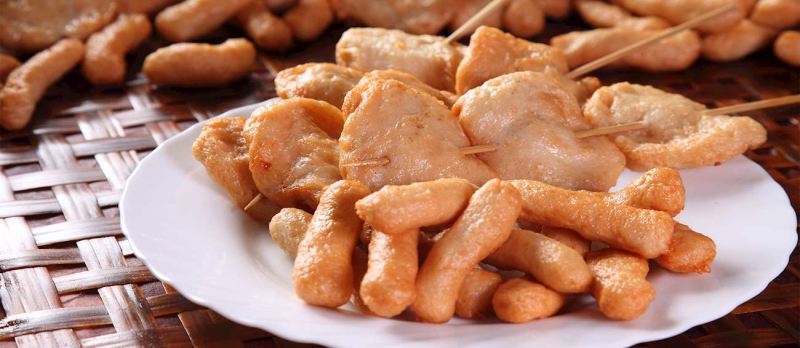
Photo By Shutterstock Source: Youtube -
The famous Taiwanese braised pig belly bun is known as gua bao. It's made up of soft steamed buns stuffed with delicate pork belly slices simmered in a sauce of soy sauce and red wine and liberally seasoned with five-spice powder. Sour pickled mustard greens, chopped cilantro, and a sprinkling of gently sweetened peanut powder are also vital accompaniments.
Gua bao is a popular Taiwanese delicacy that is mainly offered by street vendors at popular night markets in Taiwan.Eating gua bao is a tradition, especially towards the end of the year. Because of the mouth-like bun shell and the pig meat inside, Gua Bao is known as "tiger bites pig." The unusual fold-over buns are also popular in mainland China, where they are known as lotus leaf buns.
As a major admirer of Taiwanese cuisine, gourmet is always trying to recreate it at home. You must have already read about taiwanese peppercorn chicken and taiwanese minced pork over rice (lu rou fan). Taiwanese cuisine has a lot in common with mainland Chinese cuisine. However, because of the various combinations and serving methods, they are truly one-of-a-kind.
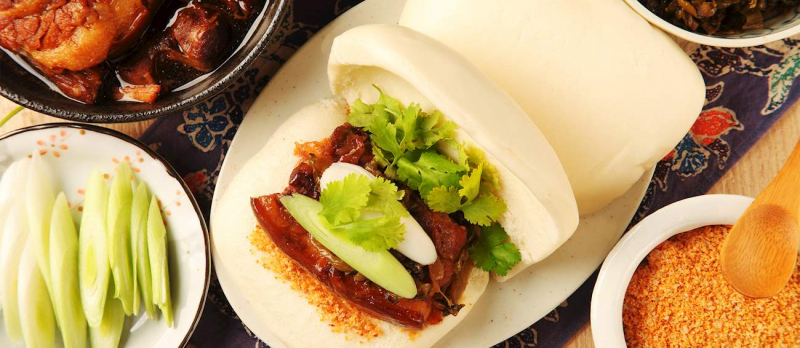
Photo By Shutterstock 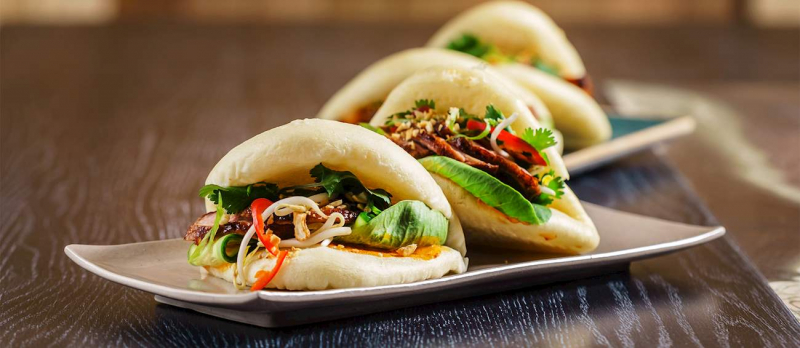
Photo By Shutterstock -
Thin misua noodles and oysters are combined in a thickened, flavorful soup in a traditional Taiwanese noodle dish called ô-á m-sa. Taiwanese oyster noodle soup is a popular night market or street vendor noodle soup that originated on Taipei's Dihua Street. They pronounce it as owa mee suan in Taiwanese.
Bowls of these soups are usually topped with oysters, pork intestines, and occasionally shrimp.Red misua noodles are boiled in a broth with minced garlic, bonito flakes, ginger, rice wine, oyster sauce, basil leaves, and cornstarch to thicken.It's normally served hot, with blanched oysters and (optionally) braised pork intestines on the side. This noodle dish is frequently laced with black rice vinegar, soy sauce, and chili sauce, and served with chopped spring onions or fresh cilantro leaves.
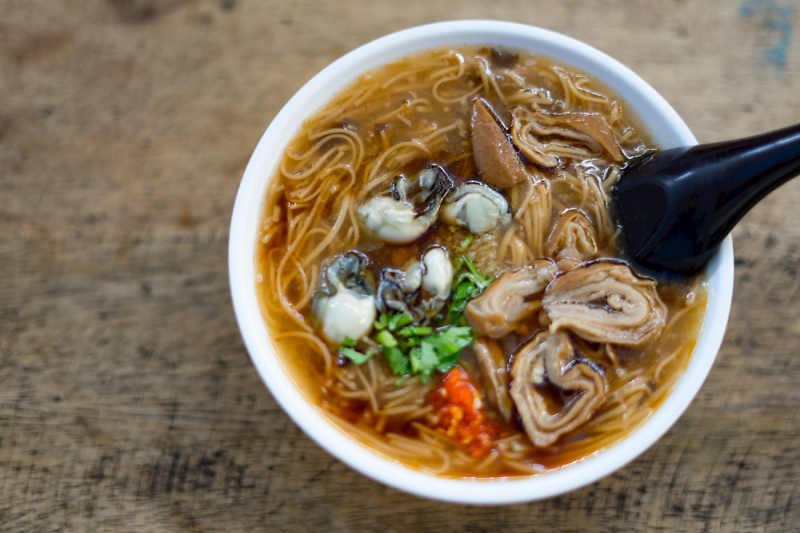
Photo By Shutterstock 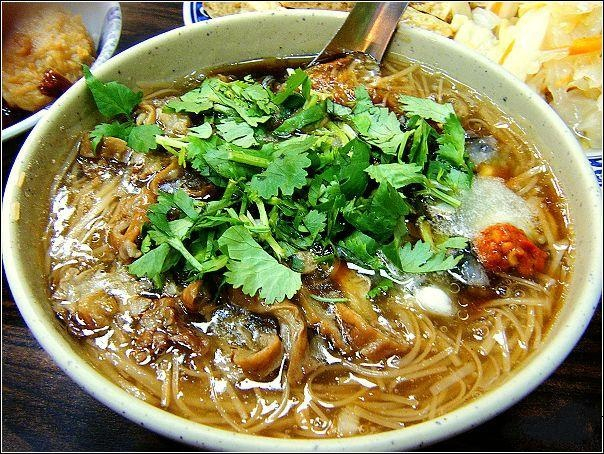
https://www.pinterest.com/




